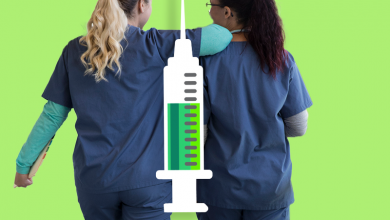Recognizing the Signs and Symptoms of Sepsis

This article was previously published June 29, 2019, and has been updated with new information.
Sepsis is a life-threatening condition triggered by a systemic infection, ultimately affecting the function of your vital organs. The infection is sometimes referred to as “blood poisoning” by the public. According to a study tracking data in two different hospital cohorts, 34.7% to 55.9% of American patients who died in hospitals between 2010 and 2012 had sepsis at the time of their death, depending on which inpatient cohort they were in.1
The condition does not discriminate and affects all age groups, socioeconomic groups and genders. A successful outcome relies on early detection and rapid treatment.
Experts are calling for recognition2 of sepsis as a distinct cause of death, hoping this will result in better clinical practice guidelines, stressing awareness in the community and the ER, which may reduce the overall number of deaths.
Infections that progress to sepsis in the hospital may increase risk of death. Researchers found the death rate of patients with sepsis was 10% compared to 1% among patients without sepsis.3 In fact, the same study found half of all in-hospital deaths were related to sepsis.
According to the Centers for Disease Control and Prevention, today, 1 in every 3 patients who dies in a hospital has sepsis.4 Also according to the CDC,5 each year 1.7 million adults in the U.S. will develop sepsis and nearly 270,000 will die as a result. In a study6 published in 2016, researchers found sepsis was the most expensive condition treated in the U.S., costing $23.6 billion each year.7
The study discovered total hospital care costs had remained stable but spending for sepsis rose by 19% from 2011 to 2013.8 Data showed sepsis was responsible for 6.2% of all hospital costs across the U.S. and hospitalization for sepsis was 70% more expensive than the average stay. Learning to recognize the symptoms to seek early care may improve the potential for a successful outcome.
Mother Recognized Sepsis Symptoms and Sought Medical Care
One mother in the U.K. made the decision to take her son to the emergency room after he scraped his arm at the zoo the week before. Alexandra Ruddy shared with Yahoo Lifestyle the story of how her son fell at the zoo and scraped his arm.9 Once home she cleaned the wound and cautioned him to continue to wash his hands and take care of the injury throughout the week.
Although the wound didn’t look infected to her, she noticed it had gotten bigger. On the way to the beach over the weekend, she noticed red track marks on his arm. She brought her son to urgent care where the physician commended her for bringing her son in quickly, as10 “It isn’t something you can ‘leave’ until Monday when the doctors are back in the office.”
Luckily, early recognition and treatment contributed to her son’s recovery. She credits knowing about what to look for from information she received from a friend two years earlier. But, sepsis may not always present after an injury or scrape.
Psychotherapist Dean Rosen thought he had the flu when he woke up with a fever.11 Less than 12 hours later, after his wife had driven him to the hospital, the emergency room physician told him he was septic and going into shock. Rosen’s blood pressure plummeted, and his kidneys shut down.
To save him, hospital staff put a port into his neck and pumped in vasoconstrictors and antibiotics. In Rosen’s case, scar tissue from Crohn’s disease had created a blockage in his intestines, resulting in an infection. Rosen was on medication for his Crohn’s disease that weakened his immune system and increased his risk.12
What Is Sepsis?
Sepsis is an extreme response to an infection already present in your body.13 The result is a medical emergency from a life-threatening chain reaction. According to the Sepsis Alliance,14 80% of cases start in the community and not in the hospital.
The most common types of infection triggering sepsis and/or septic shock are respiratory or urinary tract infections.15 However, sepsis may also develop with an infected cut or scrape as it did for Ruddy’s son, or strep throat, just to name a few scenarios.
Like Rosen, you may not even be aware that you have an infection, although most typically are.16 The definition of sepsis is a17 “life-threatening organ dysfunction caused by a dysregulated host response to infection.” As explained by the National Institute of General Medical Sciences:18
“Sepsis … is caused by an overwhelming immune response to infection. The body releases immune chemicals into the blood to combat the infection. Those chemicals trigger widespread inflammation, which leads to blood clots and leaky blood vessels. As a result, blood flow is impaired, and that deprives organs of nutrients and oxygen and leads to organ damage.
In severe cases, one or more organs fail. In the worst cases, blood pressure drops, the heart weakens, and the patient spirals toward septic shock. Once this happens, multiple organs — lungs, kidneys, liver — may quickly fail, and the patient can die.”
Symptoms of Sepsis May Look Like Something Else
One of the most important steps you can take to protect your health is to recognize the symptoms of sepsis and seek immediate medical attention if you suspect sepsis.
It is important not to make a diagnosis at home, but instead communicate your concerns with a medical professional who may begin immediate treatment. The signs of sepsis may be subtle and could be mistaken for other conditions. However, sepsis often produces:19,20,21
|
A high fever with chills and shivering |
Rapid heartbeat (tachycardia) |
|
Rapid breathing (tachypnea) |
Unusual level of sweating (diaphoresis) |
|
Dizziness |
Confusion or disorientation |
|
Slurred speech |
Diarrhea, nausea or vomiting |
|
Difficulty breathing, shortness of breath |
Severe muscle pain |
|
Low urine output |
Cold and clammy skin |
|
Skin rash |
Many of these symptoms may be confused with a bad cold or the flu. However, they tend to develop quicker than you would normally expect. The Sepsis Alliance recommends using the acronym TIME to remember some of the more common symptoms:22
- T — Temperature higher or lower than normal?
- I — Have you now or recently had any signs of an infection?
- M — Are there any changes in mental status, such as confusion or excessive sleepiness?
- E — Are you experiencing any extreme pain or illness; do you have a “feeling you may die?”
Know the Causes and Risk Factors of Sepsis
While viruses, fungi and parasites may all trigger sepsis, bacterial infections are currently the most common cause. However, research23 has demonstrated the number of fungal-induced sepsis infections is on the rise. There are several conditions that may raise your risk of developing sepsis, including:24,25
|
Diabetes |
Cancer and chemotherapy |
HIV infection |
|
Corticosteroids |
Chronic illness |
Urinary tract infections |
|
Advanced age |
Premature infants |
Spleen removal |
The rising number of antibiotic-resistant infections is also cause for concern as these infections are capable of triggering sepsis. The most commonly known antibiotic-resistant bacteria are methicillin-resistant Staphylococcus aureus (MRSA), which was first discovered in 1961.26 Over the years, newer drugs treated MRSA for a short time until the bacteria again became resistant.
The growth of antibiotic resistance is a major threat to public health worldwide, and a primary cause for this man-made epidemic is the misuse of antibiotics.27 Your exposure to antibiotic overuse is not just from prescriptions in the doctor’s office but also in food production.
Agricultural use accounts for 80% of all antibiotics used in the U.S.,28 which ultimately affects those who eat the meat from animals raised in concentrated animal feeding operations. The antibiotics alter the gut microbiome in the animal, making some antibiotic-resistant. These pass into the environment through the manure or contaminate the meat during slaughter or processing.
Post Sepsis Syndrome
While some will recover fully from sepsis, for many the problems do not end at discharge from the hospital. Survivors may suffer physical, psychological and/or neurological consequences for the rest of their lives. The combination of symptoms is called post sepsis syndrome and usually last between six and 18 months. Symptoms of post sepsis syndrome may include:29,30
|
Lethargy (excessive tiredness) |
Changes in peripheral sensation |
Repeated infections at the original site or a new infection |
|
Poor mobility |
Muscle weakness |
Shortness of breath |
|
Chest pains |
Swollen limbs |
Joint and muscle pains |
|
Insomnia |
Hair loss |
Dry flaking skin and nails |
|
Taste changes |
Poor appetite |
Changes in vision |
|
Difficulty swallowing |
Reduced kidney function |
Feeling cold |
|
Excessive sweating |
Depression |
Flashbacks |
|
Nightmares |
Post-traumatic stress disorder |
Poor concentration |
|
Short-term memory loss |
Mood swings |
Clouded thinking |
|
Anxiety |
Sadness |
Currently, there is no specific treatment for post sepsis syndrome, but most get better over time. The U.K. Sepsis Trust31 recommends managing individual symptoms and supporting optimal health as you’re recovering. They encourage survivors to talk with friends and family and not to suffer with their symptoms in silence, as this helps to get through the difficult time.
Not all medical professionals are aware of post sepsis syndrome, so it may be helpful to talk about your symptoms and ask for a referral to someone who may help manage your mental, physical and emotional challenges. Some survivors find their immune system is not as effective as long as a year following their recovery, resulting in one infection after another, including coughs and colds.
Vitamin C — A Game Changer in Sepsis Treatment
Unfortunately, treatment for sepsis is a considerable challenge, and becoming more so as antibiotic-resistant infections become more prevalent. In the video above, Dr. Paul Marik, former chief of pulmonary and critical care medicine at Sentara Norfolk General Hospital in East Virginia, discusses a successful treatment protocol he developed.
Marik’s first patient, a 48-year-old woman with a severe case of sepsis, presented in January 2016. Marik describes her condition, saying, “Her kidneys weren’t working. Her lungs weren’t working. She was going to die.”
Having read a study by researchers who had experienced moderate success treating individuals with sepsis using intravenous vitamin C, he decided to give it a try and added hydrocortisone to the infusion. Marik expected his patient would not survive the night, and was surprised to find her well on the road to recovery the next morning.
For the first two or three patients, only vitamin C and hydrocortisone were used. Marik then decided to add thiamine, for several reasons. Importantly, it’s required for metabolism of some of the metabolites of vitamin C, it protects the kidneys from failure common in sepsis,32 and many presenting with sepsis are thiamine deficient.33
Marik’s retrospective before-after clinical study published in the journal Chest,34 showed giving patients intravenous vitamin C with hydrocortisone and thiamine (vitamin B1) for two days reduced mortality nearly fivefold, from 40.4% in the control group receiving standard treatment, to 8.5% in the experimental group.
Developing an effective treatment could reap billions of dollars. However, in this case, profit is not the motive as the cost of ingredients for the protocol are as little as a single dose of antibiotics.
Consider These Strategies to Reduce Your Risk of Sepsis
Part of what makes sepsis so deadly is people typically do not suspect it, and the longer you wait to treat it, the deadlier it gets.35 If you develop an infection, stay alert to symptoms of sepsis and seek immediate medical attention if they appear. Even health care workers can miss the signs and delay treatment. You may lower your own risk by:
|
Supporting your immune system — Sleep, nutrition, exercise and optimizing your gut microbiome are foundational pillars of health. |
|
Caring for any chronic illness affecting your risk of sepsis — Research has found illnesses that increase your risk may include chronic lung disease, chronic kidney disease, diabetes, stroke and cardiovascular disease.36 |
|
Promptly treating urinary tract infections (UTIs) — UTIs are the second most common type of infection in the body, diagnosed in 150 million people each year worldwide,37 and one of the common reasons for the development of sepsis.38 Conventional treatment typically involves antibiotics, but research shows that UTIs caused by E. coli — which comprise39 90% of all UTIs — can be successfully treated with D-Mannose,40 a naturally occurring sugar that’s closely related to glucose. |
|
Properly cleaning skin wounds — Always take the time to properly clean and care for wounds and scrapes. Wash the open area with mild soap and water to and cover with a sterile bandage. Diabetics should follow good foot care to avoid dangerous foot infections. |
|
Avoiding infections in hospitals — When visiting a health care facility, be sure to wash your own hands, and remind doctors and nurses to wash theirs (and/or change gloves) before touching you or any equipment being used on you. |
|
Stopping nail biting — One study found 46.9% of the participants participated in nail biting (onychophagia).41 Exposure of the delicate skin underneath the nail, transferred from your mouth or acquired from the environment, increases the risk of infection. |




